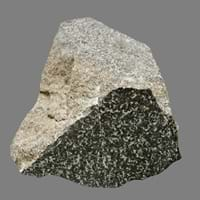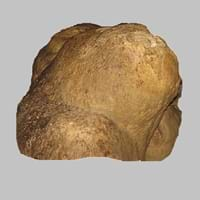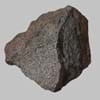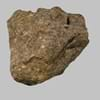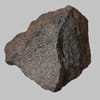Definition
Diabase is a fine-grained igneous rock which is composed mostly of pyroxene and feldspar
Travertine is a mineral consisting of layered calcium carbonate formed by deposition from spring waters
Discoverer
Christian Leopold von Buch
Marcus Vitruvius Pollio
Etymology
From Greek di + base
From Italian travertino a kind of building stone, from Tiburs, adjective from Tibur (Tivoli), in Italy
Class
Igneous Rocks
Sedimentary Rocks
Sub-Class
Durable Rock, Hard Rock
Durable Rock, Medium Hardness Rock
Group
Volcanic
Not Applicable
Other Categories
Fine Grained Rock, Medium Grained Rock, Opaque Rock
Fine Grained Rock, Opaque Rock
Texture
Aphanitic, Granular
Banded
Color
Dark Grey to Black
Beige, Black, Blue, Brown, Grey, Red, White, Yellow
Durability
Durable
Durable
Scratch Resistant
Yes
Yes
Appearance
Vesicular
Fibrous
Interior Uses
Countertops, Decorative Aggregates, Homes, Interior Decoration, Kitchens
Decorative Aggregates, Entryways, Flooring, Homes, Interior Decoration
Exterior Uses
As Building Stone, As Facing Stone, Paving Stone, Garden Decoration, Office Buildings
As Building Stone, As Facing Stone, Paving Stone, Garden Decoration, Office Buildings
Other Architectural Uses
Curbing
Curbing
Construction Industry
As Dimension Stone, Building houses or walls, Cement Manufacture, Construction Aggregate, for Road Aggregate
As Dimension Stone, Building houses or walls, Cement Manufacture, Construction Aggregate, for Road Aggregate, Raw material for the manufacture of mortar
Medical Industry
Not Yet Used
Not Yet Used
Antiquity Uses
Artifacts, Monuments, Sculpture, Small Figurines
Artifacts, Jewellery, Monuments, Sculpture, Small Figurines
Commercial Uses
An Oil and Gas Reservoir, Cemetery Markers, Commemorative Tablets, Laboratory bench tops, Jewelry, Sea Defence, Tombstones
Cemetery Markers, Creating Artwork, Gemstone, Jewelry, Paper Industry, Pottery
Types
Not Available
Not Available
Features
Smooth to touch
Stalactites and stalagmites are formed from this rock, Surfaces are often shiny, Very fine grained rock
Archaeological Significance
Famous Monuments
Stonehenge in English county of Wiltshire
Colosseum in Rome, Italy, Sacré Coeur in Paris, France, Trevi Fountain in Rome, Italy
Famous Sculptures
Data Not Available
Data Not Available
Pictographs
Not Used
Used
Petroglyphs
Not Used
Used
Formation
Diabase forms when molten igneous rock is squeezed up into a vertical crack in other rocks, the crack is usually forced apart and the molten rock cools in the space to form a tabular igneous intrusion cutting across the surrounding rocks and is known as a dike.
Travertine is a type of sedimentary rock formed when a river carries or transports pieces of broken rock which then undergo sedimentation. They are then subjected to high temperature and pressure hence forming travertine rock.
Mineral Content
Augite, Chlorite, Olivine, Plagioclase, Pyroxene, Pyrrhotite, Serpentine
Calcite, Clay, Feldspar, Micas, Quartz
Compound Content
Aluminium Oxide, CaO, Chromium(III) Oxide, Iron(III) Oxide, Potassium Oxide, MgO, Sodium Oxide, Silicon Dioxide, Sulfur Trioxide
Ca, NaCl, CaO, Oxygen
Types of Metamorphism
Burial Metamorphism, Cataclastic Metamorphism, Contact Metamorphism, Regional Metamorphism
Not Applicable
Types of Weathering
Biological Weathering, Chemical Weathering
Biological Weathering, Chemical Weathering, Mechanical Weathering
Types of Erosion
Chemical Erosion, Coastal Erosion, Water Erosion
Chemical Erosion, Coastal Erosion, Glacier Erosion
Grain Size
Fine to Medium Grained
Fine Grained
Fracture
Conchoidal
Splintery
Porosity
Highly Porous
Highly Porous
Luster
Not Available
Dull to Pearly
Cleavage
Not Available
Non-Existent
Specific Gravity
2.86-2.87
1.68
Transparency
Opaque
Opaque
Density
2.7-3.3 g/cm3
2.71 g/cm3
Specific Heat Capacity
Not Available
Resistance
Heat Resistant, Impact Resistant, Pressure Resistant, Wear Resistant
Impact Resistant, Pressure Resistant, Wear Resistant
Deposits in Eastern Continents
Africa
South Africa, Tanzania
Not Yet Found
Europe
Germany, Greece, Italy, Scotland, Turkey
Austria, Italy, Portugal, United Kingdom
Others
Antarctica, Greenland
Not Yet Found
Deposits in Western Continents
North America
Canada, USA
Canada, USA
South America
Argentina, Brazil, Colombia, Venezuela
Argentina, Bolivia, Ecuador
Deposits in Oceania Continent
Australia
Central Australia, New Zealand, Queensland, Western Australia
Not Yet Found
All about Diabase and Travertine Properties
Know all about Diabase and Travertine properties here. All properties of rocks are important as they define the type of rock and its application. Diabase belongs to Igneous Rocks while Travertine belongs to Sedimentary Rocks.Texture of Diabase is Aphanitic, Granular whereas that of Travertine is Banded. Diabase appears Vesicular and Travertine appears Fibrous. The luster of Diabase is not available while that of Travertine is dull to pearly. Diabase is available in dark grey to black colors whereas Travertine is available in beige, black, blue, brown, grey, red, white, yellow colors. The commercial uses of Diabase are an oil and gas reservoir, cemetery markers, commemorative tablets, laboratory bench tops, jewelry, sea defence, tombstones and that of Travertine are cemetery markers, creating artwork, gemstone, jewelry, paper industry, pottery.
